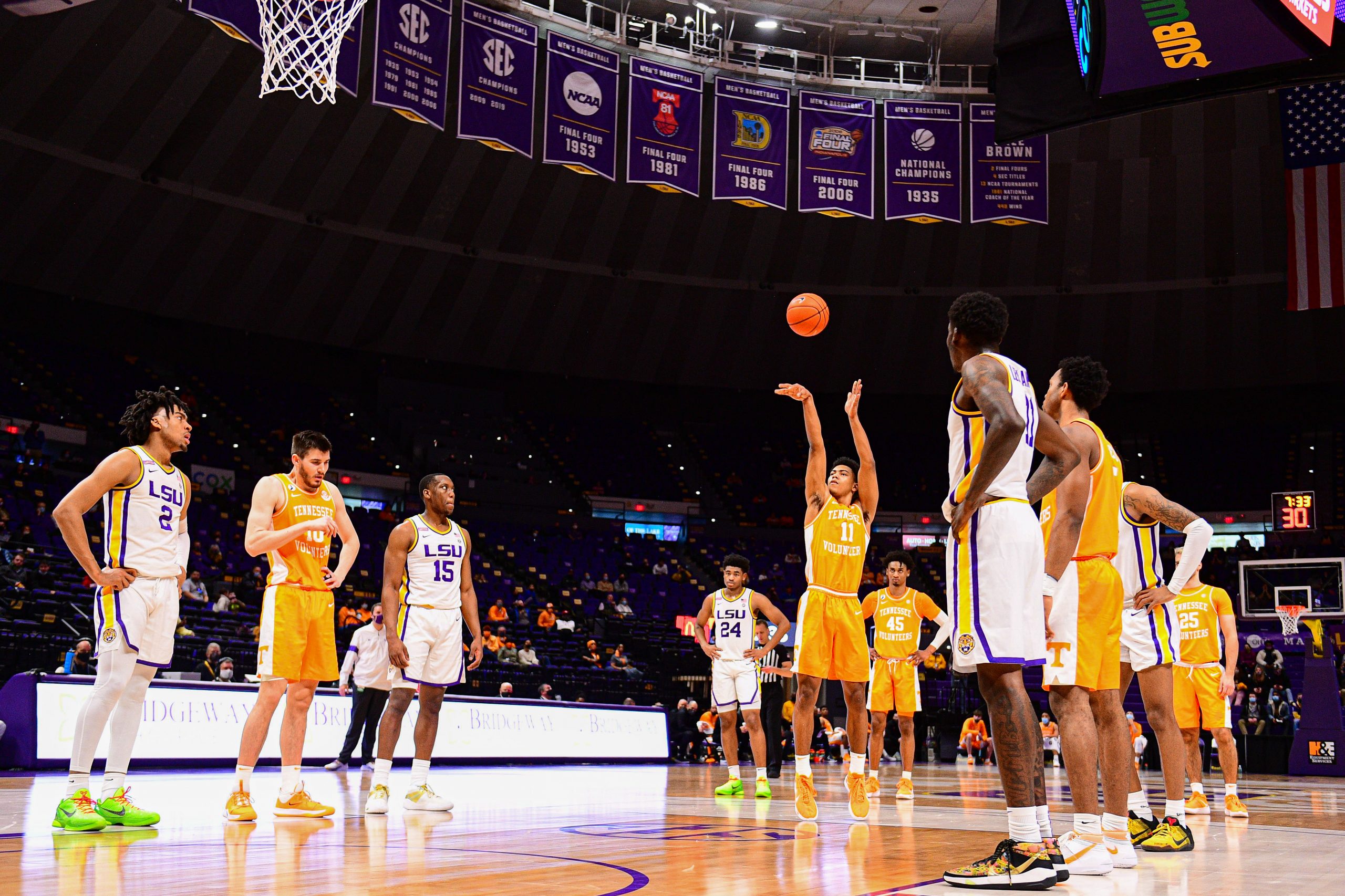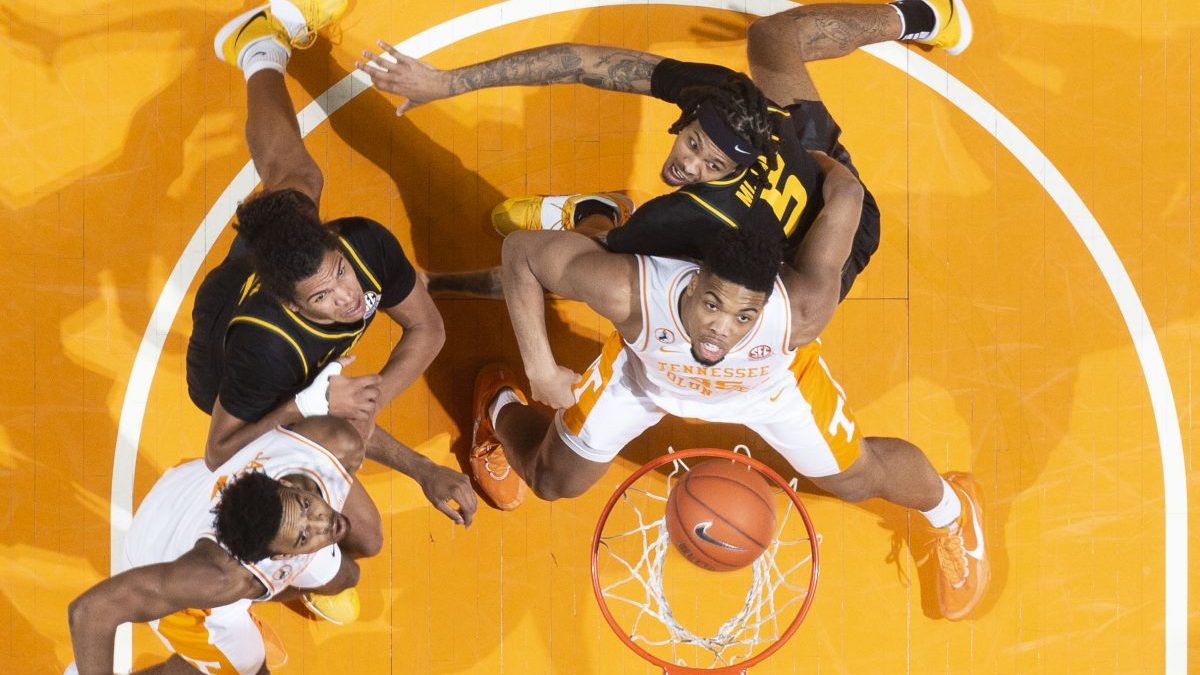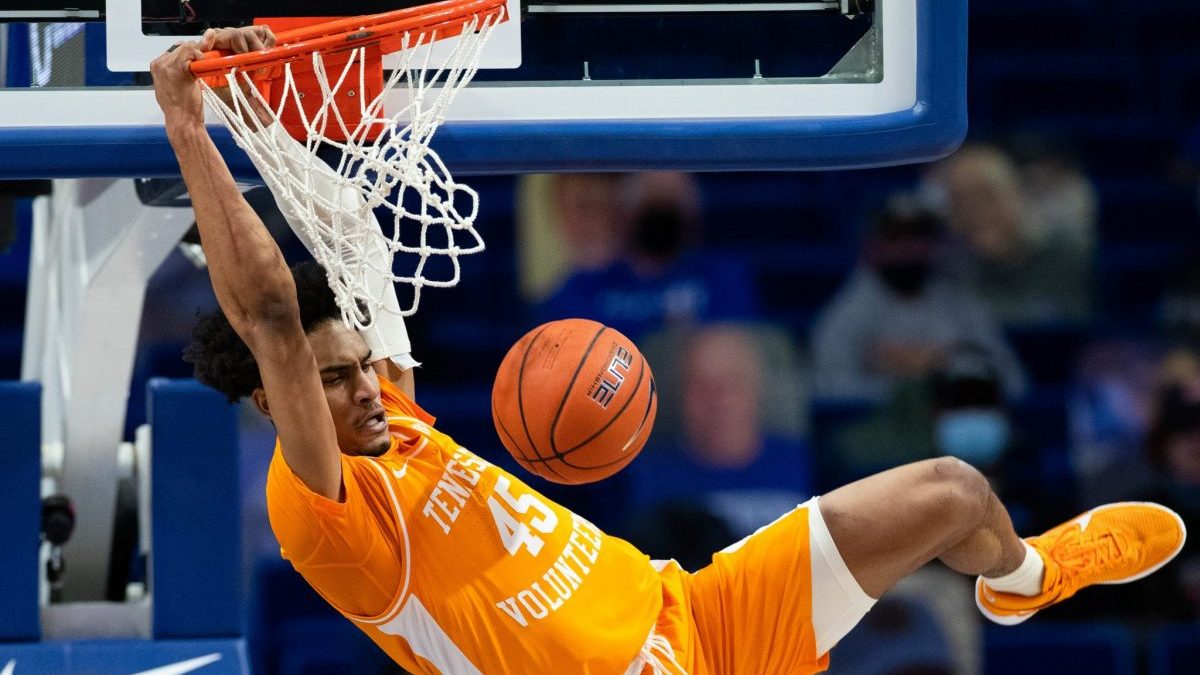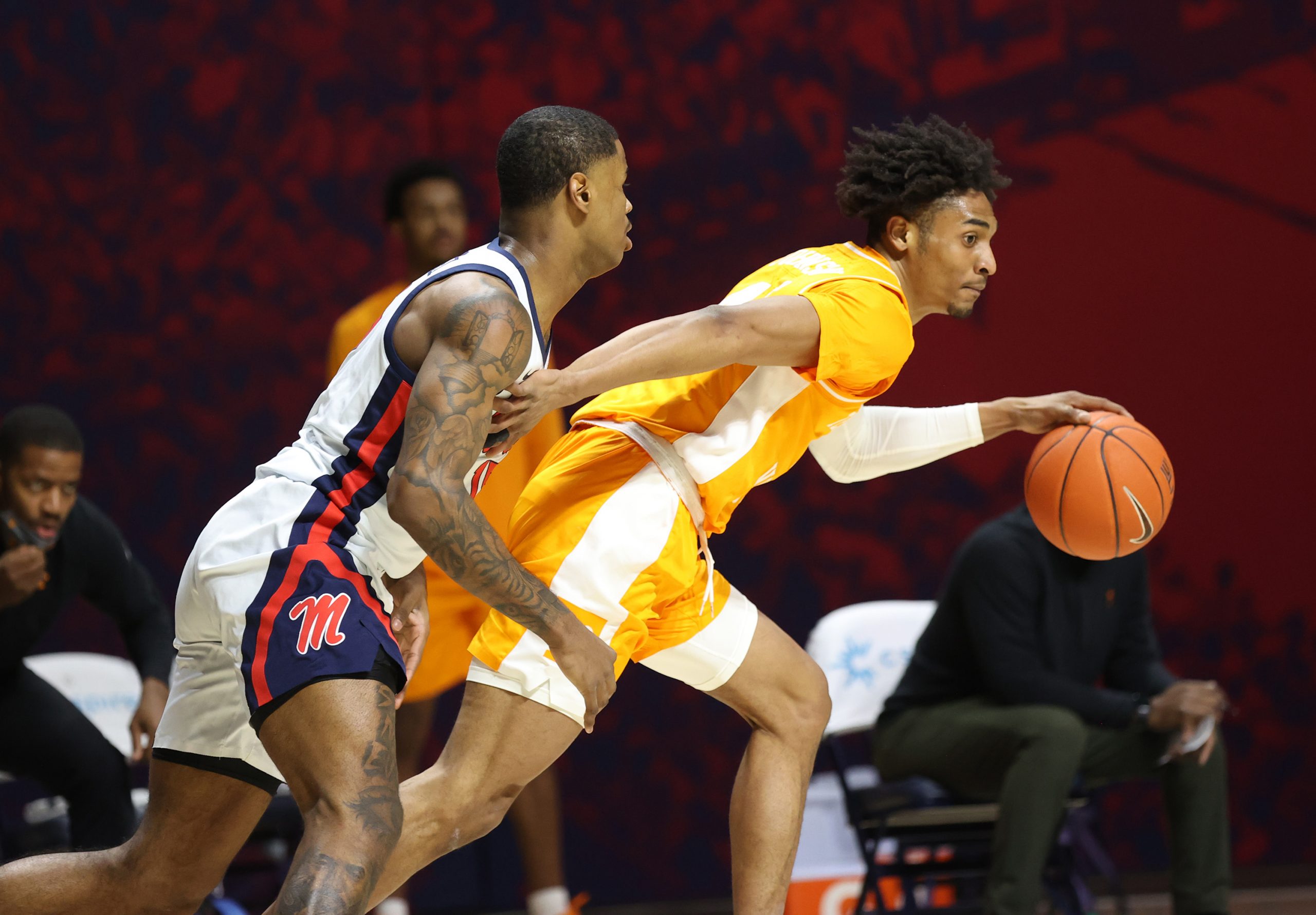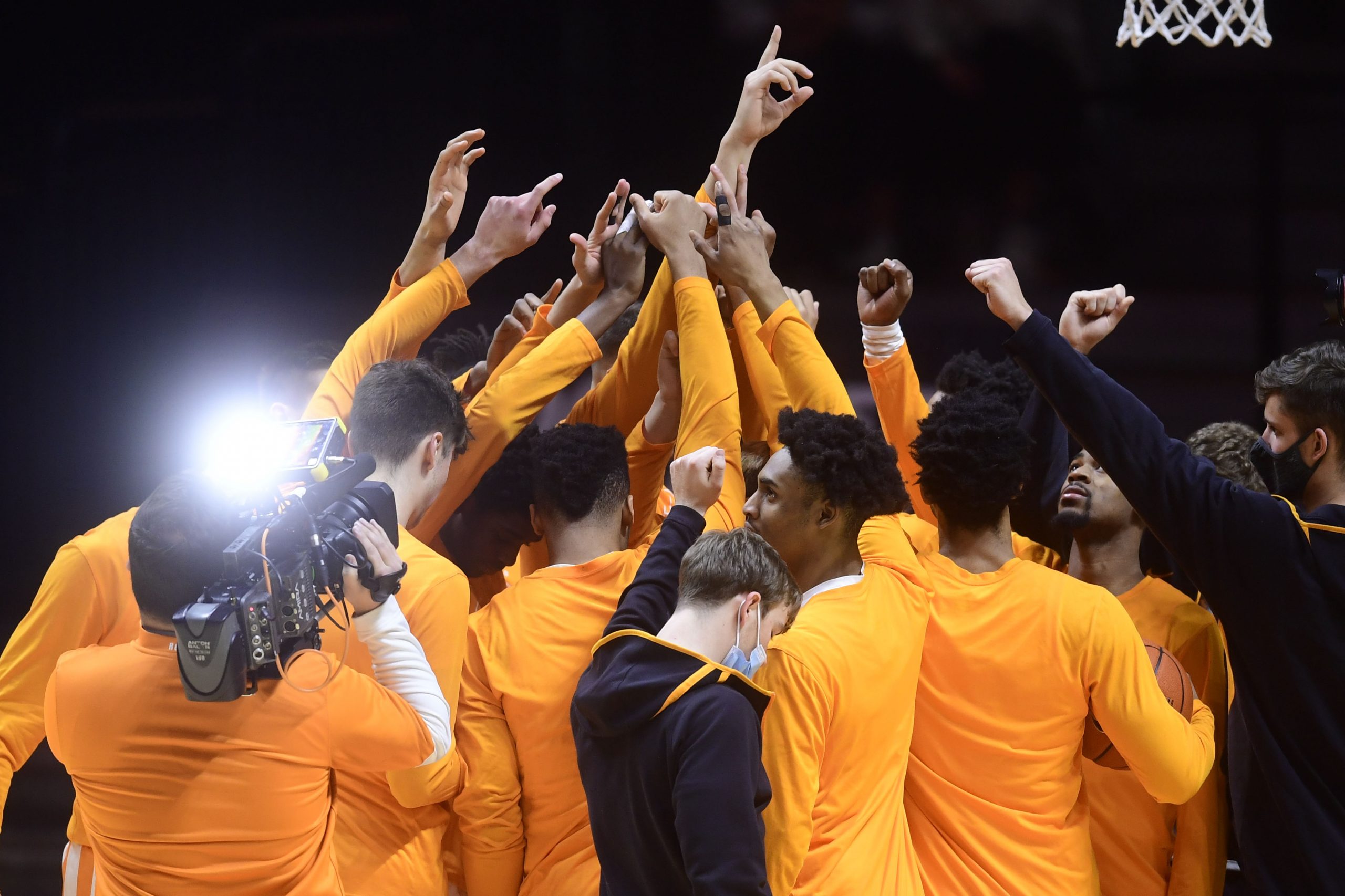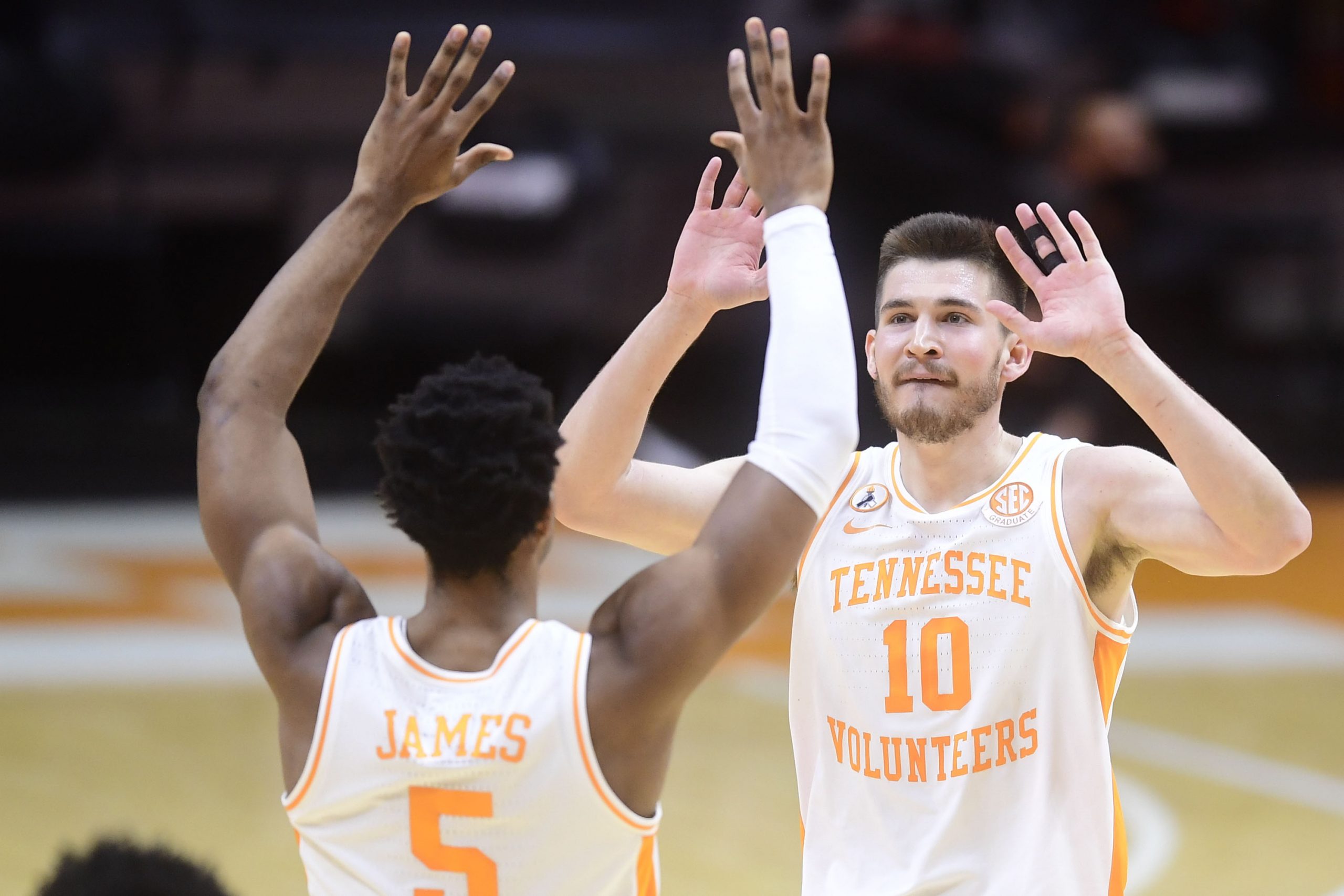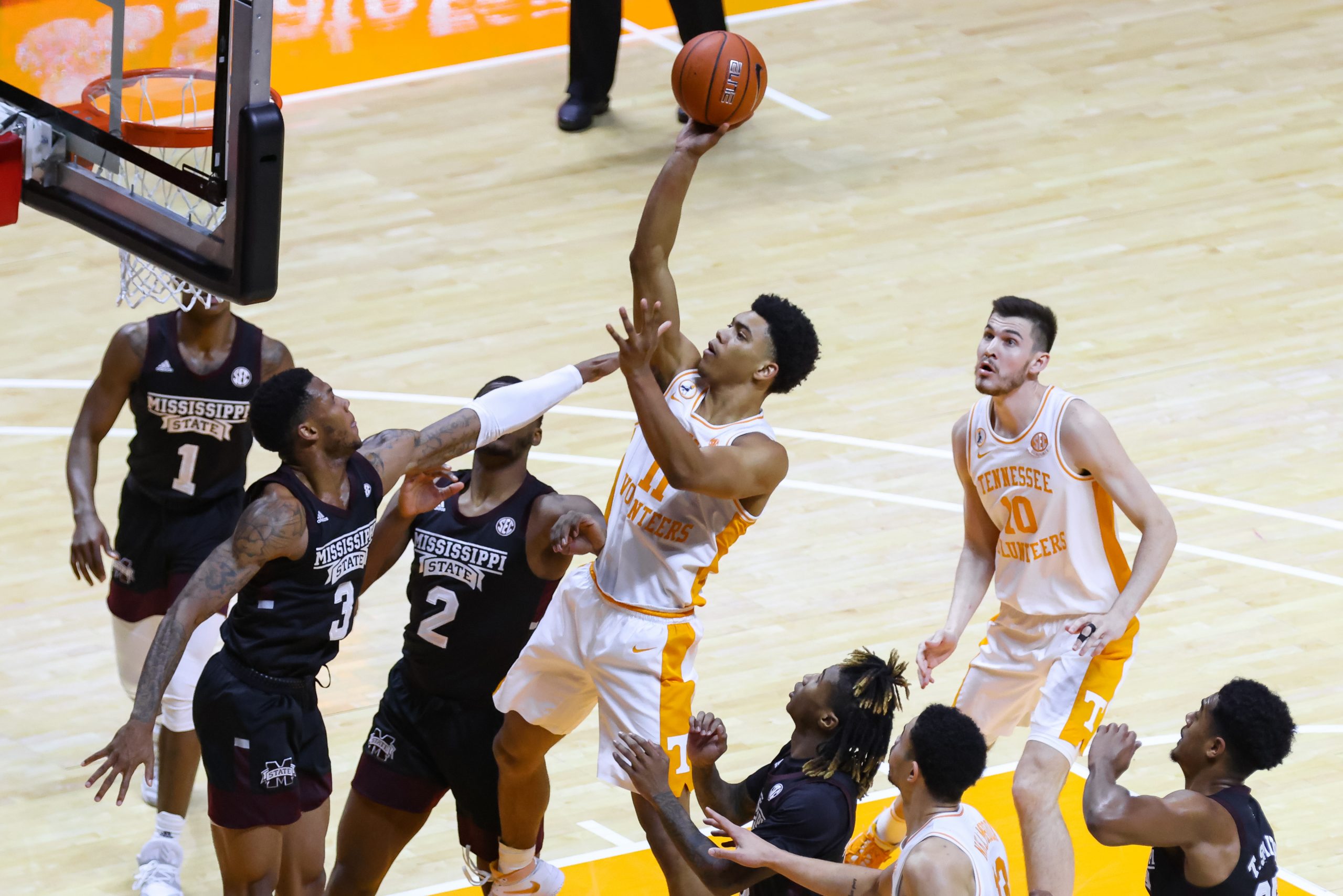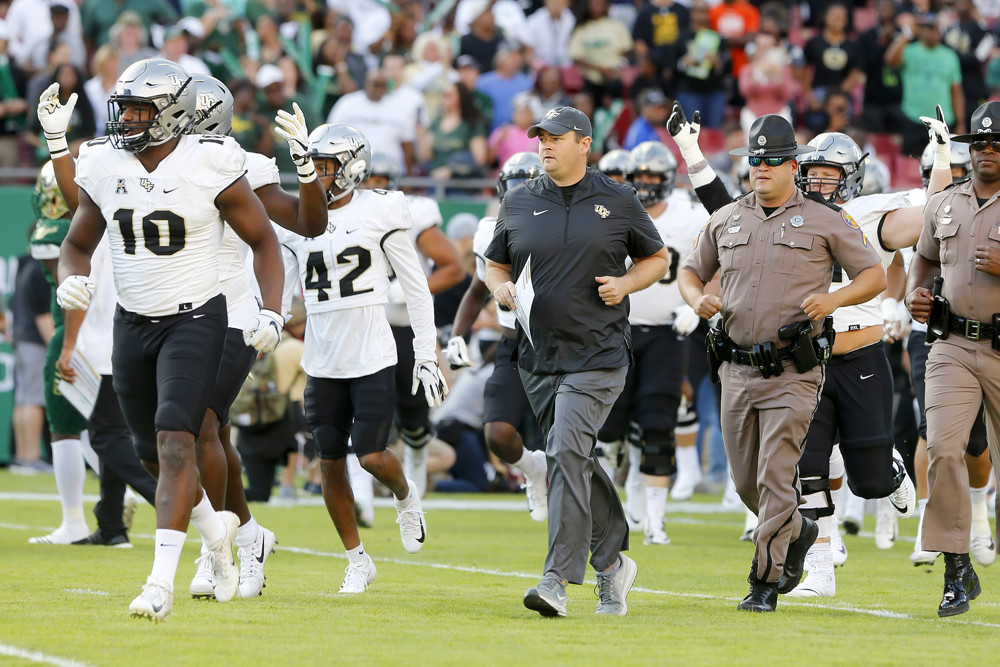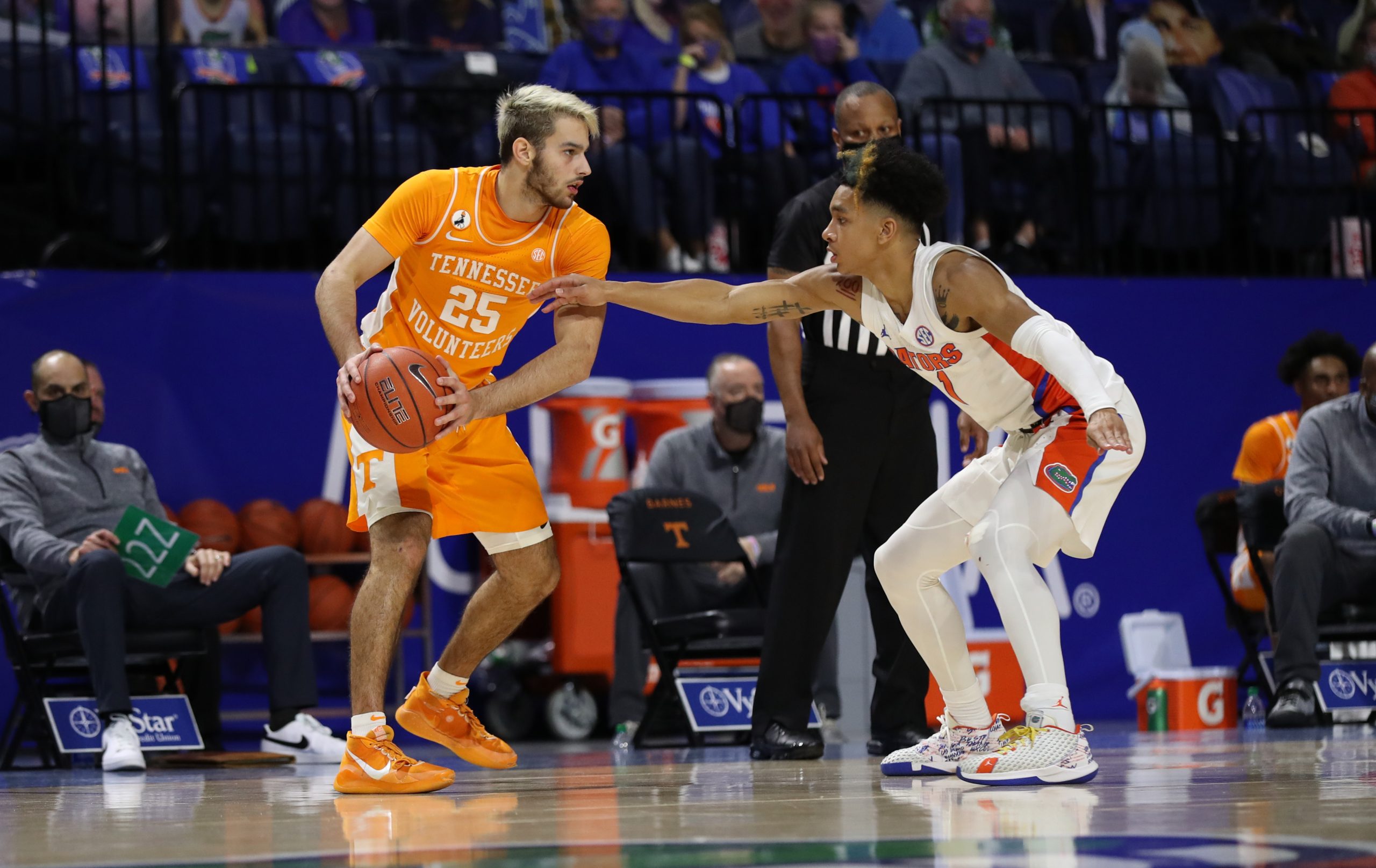The Vols improved to 15-5 (8-5) with a 93-73 win over South Carolina late Wednesday night, a welcome offensive explosion via Victor Bailey’s seven threes and a return to form from John Fulkerson. It’s Kentucky next (1:00 PM Saturday CBS); the Cats have won two straight close games over Auburn and Vanderbilt to break a 1-7 skid. But the advantage should still belong to the Vols, who will look for their ninth win in 14 tries under Rick Barnes in the series.
This is normally when we enter the “last ten games” conversation, but that number is cut in half in 2021. For a season that has felt its share of ups and downs, some historical Tennessee context is helpful to frame this team as it moves toward the tournament.
In KenPom, the 2021 Vols are still in the tier below the 2019 squad. That’s no crime, considering the 2019 Vols put up the best number in program history (26.24) and would be a three-point favorite over anyone else that’s worn orange. But the current team is right in the thick of the conversation of who’s next best:
- 2008: 22.17
- 2014: 23.69
- 2018: 22.27
- 2021: 22.31
Those four plus the 2019 squad are the only Tennessee teams to finish above 20 in KenPom, which goes back to 2002. While the 2008 squad was generally a machine until running into Louisville in the Sweet 16, Cuonzo’s last team and Rick Barnes’ SEC Championship squad knew their share of frustrations in the regular season. If 2021 feels up and down, know it’s still in very good company as far as Tennessee goes.
Here are Tennessee’s NCAA Tournament teams in the last 15 years through their first 20 games:
| Year | First 20 | Seed | Result |
| 2006 | 17-3 (8-1) | 2 | Round Two |
| 2007 | 14-6 (2-3) | 5 | Sweet 16 |
| 2008 | 18-2 (5-1) | 2 | Sweet 16 |
| 2009 | 13-7 (4-2) | 9 | Round One |
| 2010 | 16-4 (4-2) | 6 | Elite Eight |
| 2011 | 13-7 (3-2) | 9 | Round One |
| 2014 | 13-7 (4-3) | Dayton | Sweet 16 |
| 2018 | 15-5 (5-3) | 3 | Round Two |
| 2019 | 19-1 (7-0) | 2 | Sweet 16 |
| 2021 | 15-5 (8-5) | TBD | TBD |
While some of Tennessee’s best teams have been better than 15-5 through their first 20, the early SEC returns in 2010, 2014, and 2018 are similar to what we’ve seen so far. And the 2021 Vols have been particularly good at avoiding bad losses. Ole Miss is sneaking into Next Four Out conversations at the Bracket Matrix, and Tennessee’s other four defeats are all NCAA Tournament teams.
By contrast, the 2007 Vols lost six of eight from mid-January to early February, some of which came while Chris Lofton was out with a sprained ankle. But those six defeats included a loss at Auburn, who finished 17-15. The 2010 Vols infamously lost by 22 at USC in December, and by 15 at Georgia at the end of a seven-game winning streak. And if you were around seven years ago, you don’t need the details on Cuonzo Martin’s last season, featuring a pair of losses by four points (and one overtime) to Texas A&M, KenPom #110.
Barnes’ first tournament team in 2018 made their big splash by winning at Rupp Arena on February 6, improving to 18-5 (8-3). They were promptly blown out in Tuscaloosa by 28 four days later, and lost at Georgia by 11 the following Saturday. It happens; maybe it’ll happen to this team later, though later is getting thin. But so far, so good on the 2021 Vols generally taking care of their business.
Inconsistency will continue to be a talking point until it isn’t, and it may not get there with freshmen + covid. Perhaps Tennessee’s win/loss ceiling and NCAA seed possibilities have been diminished from what we thought in mid-January. But the Vols are among very good company in KenPom, don’t lose to bad teams, and may still find some of their best basketball ahead of them. And if they can get Kentucky again, we’ll find ourselves feeling quite good about Tennessee.
Go Vols.

